REMOTE SUMMER BOOT CAMP 2: COMPUTING, DATA, & VISUALIZATION
| Day | Time | Session |
| August 10 | 8:00 to 12:00 p.m. | Unix shell |
| August 10 | 1:00 to 5:00 p.m. | Intermediate R (You can view the Beginning R video from our last workshop here) |
| August 11 | 8:05 to 9:55 a.m. | VASP on INL HPC |
| August 11 | 10:00 to 12:00 p.m. | Molecular Docking for Drug Design |
| August 11 | 1:00 to 2:55 p.m. | Advanced Application of MOOSE (You can view the Beginning MOOSE video here) |
| August 11 | 3:00 to 5:00 p.m. | Web Mapping for Large COVID Data |
| August 12 | 8:00 to 9:55 a.m. | Data Visualization |
| August 12 | 10:00 to12:00 a.m. | Scientific Visualization Using ParaView |
| August 12 | 1:00 to 3:30 p.m. | Scientific Visualization using Visit and Ascent |
Hyperlinked Table of Contents
Hosted by CAES and INL C3 (Collaborative Computing Center) in collaboration with the CAES universities: Boise State University, Idaho State University, University of Idaho, and University of Wyoming.
Overview
Open to students, faculty, and INL researchers interested in using programming, computational modeling, data science or visualization tools in their research. No prior knowledge of the tools to be presented is needed.
Sessions to include:
- Software carpentry helps researchers get more done in less time. This hands-on workshop will cover fundamental skills needed to reproducibly analyze data, create plots, and manage projects with distributed teams of scientists. Specifically, participants will learn command-line interfaces (bash) and programming language R for numerical computing.
- Computational Modeling, Data Science and Visualization Tool Introduction aims to educate researchers and students (including experimental and computational modelers) enabling rapid implementation of computational modeling, data science and visualization tools in their research. Topics will include VASP, Molecular Docking, MOOSE, Web Mapping, Data Visualization, and Scientific Visualization.
- Research Discussion Panel aims to present, highlight, and discuss opportunities for joint research between BSU, ISU, UI and INL researchers, faculty, and staff. Topics include active research projects, potential joint research projects, researchers who are interested in joint research projects, and sources for funding for joint collaborative research.
Registration Instructions/Link
Go here to register for the individual workshops.
Closer to the workshop dates, organizers will send meeting links for online participation.
So we can facilitate the best learning environment for participants, workshop links are limited. If the workshop you'd like to attend is unavailable, please select the waitlist option at the end of the registration form.
By registering, you agree to appear for your online seat. If you cannot attend, please email researchcomputing@boisestate.edu so we can open the seat for someone else.
Agenda
The following workshops will occur remotely on the listed dates and are scheduled for Mountain Time. The confirmed presenters are listed in the schedule. More presenters will be announced soon. Please register only for the workshops you plan to attend, and register for as much or as little of the program as your schedule allows.
| _____Time_____ | Instructor(s) | Institution(s) | Tutorial |
| Software Carpentry on Aug. 10th | |||
|
8am-noon
|
Breanna Sipley, Clint Elg, Travis Seaborn, Mike Henry | CAES Institutions | Unix shell |
| 1-5pm | Amanda Culley, James Van Leuven, Kyle Shannon | CAES Institutions | Intermediate R (Please view the Beginning R video from our last workshop here) |
| Computational Modeling and Data Science on Aug. 11th | |||
| 8-8:05am | Lan Li | Boise State University | Workshop Intro |
|
8:05-9:55 am
|
Matthew Anderson and Ben Nickell
Ember Sikorski and Austin Biaggne |
Idaho National Laboratory
Boise State University |
VASP on INL HPC |
| 10am- noon | Jagdish Patel | University of Idaho | Molecular Docking for Drug Design |
| 1-2:55pm | Min Long | Boise State University | Advanced Application of MOOSE (Please view the Beginning MOOSE video here) |
| 3-5pm | Carrie Bottenberg | Idaho State University | Web Mapping for Large COVID Data |
| Visualization on Aug. 12th | |||
| 8-9:55am | Steven Cutchin | Boise State University | Data Visualization |
| 10am- noon | Rajiv Khadka | Idaho National Laboratory | Scientific Visualization Using ParaView |
|
1-3:30pm
|
Hank Childs
Cyrus Harrison, and Eric Brugger |
University of Oregon
Lawrence Livermore National Laboratory |
Scientific Visualization Using Visit and Ascent |
| Research Discussion Panel at 9am-noon on Aug. 13th | |||
Workshop Materials
Go here to access materials needed for the Software Carpentry Workshops.
Go here for the materials needed for the Computational Modeling, Data Science and Visualization Tool Introduction.
Requirements
Participants must have a laptop/desktop with a Mac, Linux, or Windows operating system (not a tablet, Chromebook, etc.) that they have administrative privileges on, camera and microphone that will be used to interact with instructors and other participants.
Some tools the workshops will demonstrate are available on the nanoHUB. Go here to create a nanoHUB account.
Presenter Bios
Breanna Sipley, University of Idaho — Breanna Sipley is a PhD in Bioinformatics and Computational Biology at the University of Idaho. She is grateful for her growing computational toolkit, which, for better or worse, has emboldened her knack for picking hard problems to study and compulsion for making figures unnecessarily beautiful. Eager to help empower others to do and share exciting and reproducible science, Sipley was recently certified as a Software Carpentry instructor and is looking forward to helping out with her fourth workshop.
Clint Elg, University of Idaho
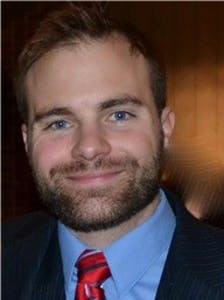 Clint Elg is a PhD Candidate in the Bioinformatics and Computation Biology (BCB) program at the University of Idaho. He is experienced in sequencing bacterial genomes and has authored a software package in Python. He enjoys helping others make connections and learn new things.
Clint Elg is a PhD Candidate in the Bioinformatics and Computation Biology (BCB) program at the University of Idaho. He is experienced in sequencing bacterial genomes and has authored a software package in Python. He enjoys helping others make connections and learn new things.
Travis Seaborn, University of Idaho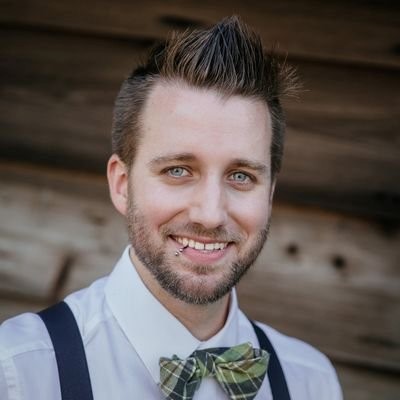
Travis Seaborn is a post-doctoral researcher at University of Idaho in the department of Fish and Wildlife Sciences. Travis is interested in a broad range of ecological modelling and simulation techniques. He loves helping new learners tackle the basics of coding.
James Van Leuven, University of Idaho
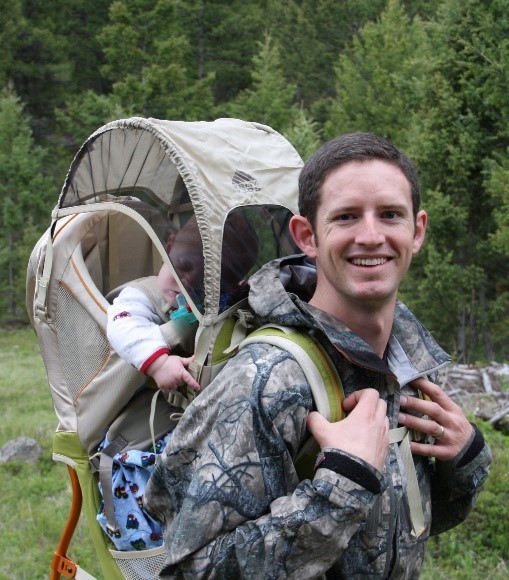
James Van Leuven is a Research Assistant Professor in the Department of Biological Sciences and the Institute for Modeling, Collaboration, and Innovation at the University of Idaho. James uses computer programming to study microbial genome evolution and enjoys teaching students bioinformatic and computational skills.
Amanda Pavlov Culley, Statistical Analyst at ArcherDX
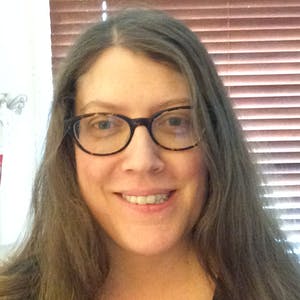
Culley is a statistical analyst at ArcherDX, a genomics company in Boulder, CO, who has been using R extensively for statistical analysis for 8 years. She was recently certified as a Carpentries instructor and enjoys training others to use R.
Lan (Samantha) Li, Boise State University — Ab Initio Modeling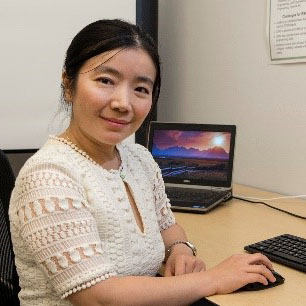
Dr. Li is an Associate Professor of Materials Science and Engineering and a leader of Materials Theory and Modeling group at Boise State University in Boise, ID. Her general research interest is multiscale modeling, specifically coupling ab initio to the larger length scale modeling approaches to develop materials with desired properties and performance. Dr. Li finished her doctorate in Nanomaterials at the University of Cambridge in the UK, followed by working in the Bio-Nano Electronic Research Center at Toyo University in Japan. She conducted her research as a post-doc associate on the theoretical and computational studies of metal-fullerene nano-systems, hydrogen-storage materials, and metal oxide thin films at the Department of Physics, University of Florida. She then joined the Center for Materials Informatics at Kent State University in Ohio and worked in collaboration with various national labs and universities on the development of computational materials research code projects and the transformation of these research codes into modules suitable for effective use in undergraduate education. In 2011, she was a senior fellow at the National Institute of Standards and Technology in Gaithersburg, MD, working on energy and sustainability. Dr. Li was awarded American Recovery and Reinvestment Act Program Fellowship by National Institute of Standards and Technology (NIST) in 2011, Young Leader Professional Development Award by the Minerals, Metal and Materials (TMS) society in 2014, William Mong Visiting Research Fellowship in Engineering by University of Hong Kong and Top Ten Scholar Honored Faculty by Boise State University both in 2018. She has served as a former chair of TMS Education Committee, and presently serves as a programing chair for TMS Integrated Computational Materials Engineering (ICME) Committee.
In this tutorial, she will introduce various ab initio modeling tools and how to use the tools to analyze structural stability and electronic properties and simulate chemical reactions.
INL HPC Team — HPC at INL
Members of the high-performance computing group at Idaho National Laboratory represent system administrators, software consultants, and data scientists with expertise in density functional theory, hydrodynamics, deep learning, storage technology, networks, cybersecurity, and performance modeling. This tutorial will introduce the HPC systems at INL and deep learning, and demonstrate special use cases (like VASP, Natural Language Processing, etc.).
Ember Sikorski, Boise State University — Introduction to the Vienna Ab Initio Simulation Package

Ember Sikorski is a PhD candidate in the Micron School of Materials Science and Engineering at Boise State University. She has been using atomistic modeling to better understand alternative energy materials since 2014. Her PhD research focuses on accident tolerant nuclear fuel and in-pile sensors. She is a recipient of a 2020 Innovations in Nuclear Technology R&D Award for her first-principles work on a candidate nuclear fuel.
Ember Sikorski, Boise State University — Introduction to the Vienna Ab Initio Simulation Package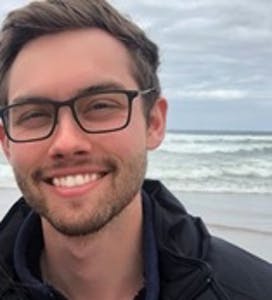
Ember Sikorski is a PhD candidate in the Micron School of Materials Science and Engineering at Boise State University. She has been using atomistic modeling to better understand alternative energy materials since 2014. Her PhD research focuses on accident tolerant nuclear fuel and in-pile sensors. She is a recipient of a 2020 Innovations in Nuclear Technology R&D Award for her first-principles work on a candidate nuclear fuel.
Jagdish Patel, University of Idaho — Molecule Dynamics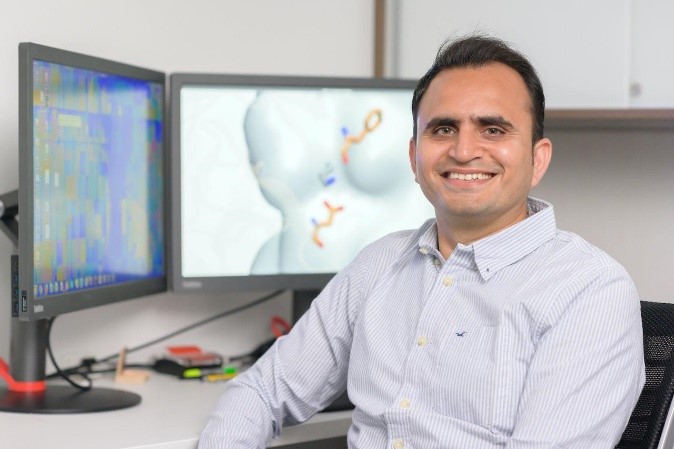
Dr. Patel is a research assistant professor in the department of Biological Sciences and affiliated with the Institute for Modeling Collaboration and Innovation at the University of Idaho. He is a molecular modeler and his research experience is in interdisciplinary biomolecular modeling. He has more than eight years of experience performing biomolecular simulations. He uses variety of molecular modeling techniques to study protein-protein interactions, protein-ligand interactions, and sequence-structure-function relationships. He has an experience of dealing with membrane proteins, protein-protein systems, protein-ligand systems, and other soluble proteins in microbes and vertebrates. His lab has interdisciplinary research programs focused on discovering novel anti-viral compounds and studying genome to phenome relationships in opsins, a protein present in the eye.
In this tutorial, you will learn basics of classical MD simulation and you will have hands-on experience of using GROMACS, an open source program for performing MD simulations with an emphasis on proteins.
Min Long, Boise State University — MOOSE Finite Element Modeling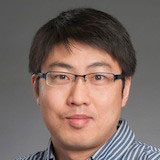
Dr. Min Long is an Assistant Professor in the Department of Computer Science at Boise State University. Prof. Long has extensive experience in scientific computing, numerical methods, data structures and algorithms, data analytics and computational physics. His primary interests in materials are in correlation between material characteristics and microscopic structures of ceramics, alloys, and complex systems. He works on multi-scale modeling of microstructures of core and structural materials, including solidification and irradiation process; FEM analysis using MOOSE framework and its applications of phase-field method code MARMOT, fuel performance code BISON. His area of expertise in computational high-energy physics covers data-driven, large scale computational fluid dynamics simulation of plasmas. He is a DOE visiting faculty and has collaborated with INL scientists in multiple projects. He received his Ph.D. from Cornell University and then worked as a postdoc fellow in computational science in University of Illinois and University of Chicago before joining the Computer Science Department in 2016.
Carrie Bottenberg, Idaho State University — Introduction to Web Mapping
Carrie Bottenberg is an Assistant Professor in the Geosciences and a Director of Geotechnologies at Idaho State University. She teaches Principles of Geographic Information Systems (GIS), Advanced GIS, GPS Applications in Research, Remote Sensing, Advanced Remote Sensing and Image Processing. She is currently interested in geologic satellite imagery analysis for thermal/mineral exploration, radar/interferometry to study geoscience processes and web mapping applications. She has an MS and PhD in Geology and Geophysics from Missouri University of Science and Technology. Her MS involved mapping and analyzing heavy metals in mine-contaminated streams and her PhD involved 4-D plate tectonics modeling of the East African Rift System. She loves making digital maps and exploring the outdoors with field-based teaching.
This workshop will enable researchers to share their spatial data online with their research group and beyond. We will work with the current, complex country, state, and US county COVID-19 data from GitHub and easily import it into a web mapping software for analysis and visualization. We explore how different data classifications (natural breaks, equal area, etc.) and symbology can tell different narratives at varying scales. We will incorporate US Census spatial data, (spatially joined data with current data), perform hotspot analysis, and examine infection rate trends. Lastly, we will create an informative dashboard with embedded maps and community resources.
Steve Cutchin, Boise State University — Data Visualization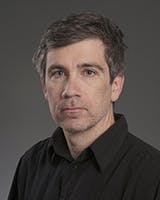
Dr. Steve Cutchin joined the faculty at Boise State University in August 2013 From 2008 to 2013 he was manager of the KAUST Visualization Laboratory Core Facility and the Supercomputer Facility at King Abdullah's University of Science and Technology (KAUST) in Thuwal, Saudi Arabia. At KAUST he recruited a technical team of engineers and visualization scientists while managing the building of the state of the art scientific data visualization laboratory on the KAUST campus, forged relationships with international university and corporate partners, continued to improve the laboratory and recruit new staff. Prior to his work in Saudi Arabia, Dr. Cutchin worked at the University of California, San Diego (UCSD) first as manager of Visualization Services at the San Diego Supercomputer Center and later at California Institute for Telecommunications and Information Technology (Calit2). He has worked as a Sr. Software Engineer at Walt Disney Feature Animation developing software tools to improve animation production on feature films. He has published articles on Computer Graphics and Visualization, created animations for Discovery Channel and images for SIGGRAPH and Supercomputing conferences and journals. Dr. Cutchin's workshop will introduce visualization with an emphasis on scientific visualization using data sets from several sources. The workshop will begin with an overview of visualization fundamentals, including taxonomies and pipelines. This will be followed by tutorials presenting different software packages for scientific visualization. The tutorials will provide hands-on training with current open-source software available for visualization, including the Paraview toolkit. The workshop's goal is to introduce students and researchers to visualization tools that they can get started with immediately and continue to use after completing the workshop.
R ajiv Khadka, Idaho National Laboratory — Scientific Visualization Using ParaView
ajiv Khadka, Idaho National Laboratory — Scientific Visualization Using ParaView
Rajiv Khadka is a Visualization researcher in Applied Visualization Laboratory (AVL) at Idaho National Laboratory (INL). His research interest lies around virtual and augmented reality, HCI, data visualization, immersive analytics, remote telecollaboration, and 3D user interfaces. He has a proven track record of researching and creating cutting-edge user interaction methods, visual analytics applications, and tools that improve scientific workflows within Virtual and Augmented Reality environments. He is also a dedicated and passionate educator, delivering engaging lessons and providing mentorship to his students, while also writing successful proposals and furthering research.
Hank Childs, University of Oregon — Scientific Visualization Using Visit and Ascent
Hank Childs is an Associate Professor in the Computer and Information Science Department at the University of Oregon. He received his Ph.D. in computer science from the University of California at Davis in 2006. Hank's research focuses on scientific visualization, high performance computing, and the intersection of the two. In addition to his research, Hank has been an active participant in visualization software, including the VisIt, Ascent, and VTK-m projects. Before joining UO, Hank spent over a dozen years working in big data visualization at Lawrence Berkeley and Lawrence Livermore National Laboratories.
Cyrus Harrison, Lawrence Livermore National Laboratory — Scientific Visualization Using Visit and Ascent
Cyrus Harrison is a Computer Scientist and Section Leader in Lawrence Livermore National Laboratory's Computing Directorate. He develops data management, analysis, and visualization tools that support HPC multi-physics simulations. He is the software architect of the VisIt open source visualization tool and leads major aspects of the technical direction of the project.
Eric Brugger, Lawrence Livermore National Laboratory — Scientific Visualization Using Visit and Ascent
Eric Brugger has over 25 years' experience developing and using scientific visualization and analysis software. He is the VisIt project leader and one of the original developers of the software. He received an R&D 100 award in 2005 as part of the development team of VisIt. He has extensive experience assisting users visualize and understand their simulation data as well as providing hands on VisIt training in workshop settings.
Organization Committee
CAES/INL C3 Computational Training Group
Boise State University: Lan Li, Eric Jankowskil, Steven Cutchin, Mendi Edgar
University of Idaho: James VanLeuven, Amanda Culley, Travis Seaborn
Idaho State University: Shannon Kobs Nawotniak
University of Wyoming: Dilpuneet Singh Aidhy
Idaho National Laboratory: Eric Whiting, Ben Nickell, Rajiv Khadka
Center for Advanced Energy Studies: Monica S. Dudenhoeffer

